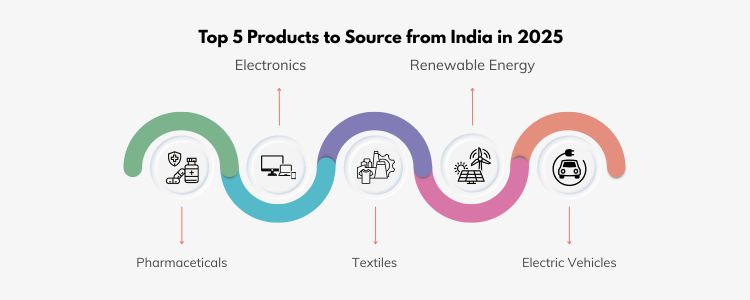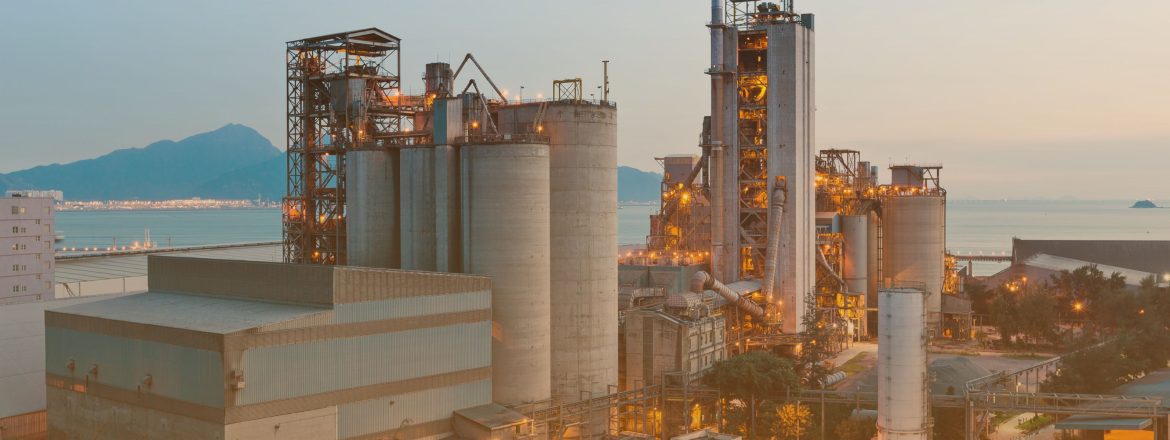The Rise of Indian Manufacturing Industry: Best Products to Source From in 2025
In the last ten years, India has shifted away from being simply a services-driven economy to becoming a global manufacturing hub. With programs such as the Make in India initiative and the Production Linked Incentive (PLI) schemes, India is positioning itself as a viable alternative to China in global supply chains. By 2025, the Indian manufacturing sector will have a significant impact on global trade patterns by providing both cost effectiveness as well as product variety.
For many global businesses, the focus of sourcing from India is not just price anymore; it is now price, quality, innovation, and scale. This article will explore which sectors are leading this change, what products to source in 2025, and why India is positioning itself to be the sourcing destination.
The Transformation of Indian Manufacturing
- Change in Economic Priorities
India’s economic narrative has historically been service- and agriculture-driven; however, manufacturing is being touted as an essential backbone of the economy. Operational plans, infrastructure investments, and digitization of industry will mean the Indian sector can inject life into the industrial ecosystem for the economy.
- Push for Manufacturing from the Government
Given all the government’s engagement in schemes like PLI and other incentives and changes for electronics, textiles, and automotive manufacturing, India has mobilized a lot of investment, both domestic and foreign, for manufacturing. The emphasis on “Atmanirbhar Bharat” is not only a play to cut back imports but very much about increased exports.
- Technology-Enabled Growth
Automation, AI-capable production lines, and Industry 4.0 practices mean factories in India are increasingly using technology alongside traditional features, such as apparent human resources and capabilities, to compete in international markets.
Indian Manufacturing Industry Growth Prospects
The prospects for growth in the Indian manufacturing industry remain very positive, given the large domestic market and global trade reconfiguration. According to industry forecasts, India’s manufacturing sector can be expected to represent nearly 25% of GDP by 2025 from approximately 16-17% a decade ago.
Key factors driving this growth include:
- Diversification of supply chains moving away from China.
- Growing domestic consumption, especially in urban centers.
- Strong policy support for electronics, defense, renewable energy, and textiles.
- FTAs are opening access to many new markets for Indian exports.

Best Products to Source from India in 2025
- Medical and Health Products
India is already referred to as the “pharmacy of the world,” as it manufactures low-cost generics and vaccines. By 2025, India will likely have a deeper footprint in advanced biologics, medical devices, and pharmaceuticals export.
- Electronics and Semiconductors
India is looking to establish itself as a sourcing hub in electronics, building a serious competitor to East Asian (China, Thailand, and Malaysia) manufacturers. With PLI schemes on smartphones, wearables, and components, the electronics sector could attract consumer and industrial sourcing opportunities.
- Textiles and Apparel
India’s textiles industry (with specific strengths in cotton, silk, and synthetic textiles) is likely to continue to thrive. Similarly, sustainable and organic textiles will continue to have a broader demand from Western countries and could provide profitable import opportunities from India.
- Renewable Energy Equipment
While India has made gains far into solar panel and wind turbine component manufacturing, the Department of Industry and Relations is looking to broaden India’s footprint in clean energy manufacturing. New constraints from global economies around climate change mean massive growth in this category over the next several years.
- Automotive and EVs
India is aggressively funding EV manufacturing, and companies are producing affordable two-wheelers, battery packs, and components. The automotive and EV space will be one of the best options for sourcing opportunities of the future.
- Agro-processed Food and Ingredients
The agricultural potential of India, combined with modern processing capabilities, allows for packaged food, organic produce (unprocessed), and spices.
Indian Exports to USA/EU: Expanding Opportunities
India is estimated to have its exports to the USA/EU sustaining a double-digit growth rate by 2025, driven by higher demand for pharmaceuticals, textiles, machinery, and green technologies. Tariff advantages through FTAs, along with compliance with international quality standards, will propel India’s role in these markets.
Why Businesses Prefer Indian Suppliers
- Cost versus Quality
India offers a unique combination of low costs and high-quality outputs, which creates appeal to purchasers globally.
- Skilled Workforce
One of the largest pools of engineers, technicians, and floor workers creates scalability without sacrificing skill in India.
- Supplier Options
A large network of SMEs and large businesses offers fairly low costs and a variety of supply chain options. Many global companies are already working with Indian suppliers for global sourcing to diversify supply chains and mitigate regional dependence.
- Regulatory Assistance
Easing compliance processes and digitizing customs clearances have diminished transaction costs.
Challenges Ahead
India’s growth story is unique, but challenges remain:
- Infrastructure chasms in logistics and ports.
- Bureaucratic holdup with approvals is improving.
- Engagement from Vietnam, Indonesia, and Mexico on a global basis.
Nevertheless, and persistently in reforms and investments in the infrastructure corridors will continue to work through the bottlenecks.
Future Outlook
The Indian manufacturing landscape of 2025 is not just about cheap production, but about innovation, scale, and sustainability. From high technology electronics to sustainable textiles, India is offering products that match global consumers’ and industrialists’ demands. Sourcing from India is fast becoming a strategic necessity for companies globally, not an option.
Frequently Asked Questions (FAQ)
Electronics, pharmaceuticals, renewable energy, and textiles will all be drivers.
India provides cost-effectiveness, skilled labor, and positive policy choices, making India a secure addition to global supply chains.
Textiles, pharmaceuticals, agro-processed products, and electronics.
Very competitive due to regulatory compliance, quality, and cost parity with similar products, and benefits from a tariff-free trade agreement.
Suppliers provide flexibility, scale, and reliability to global buyers and thus mitigate the supply chain disruption inherent in supply chain risks.
Great people, great policy, together with a variety of industry clusters.









